Experimenters
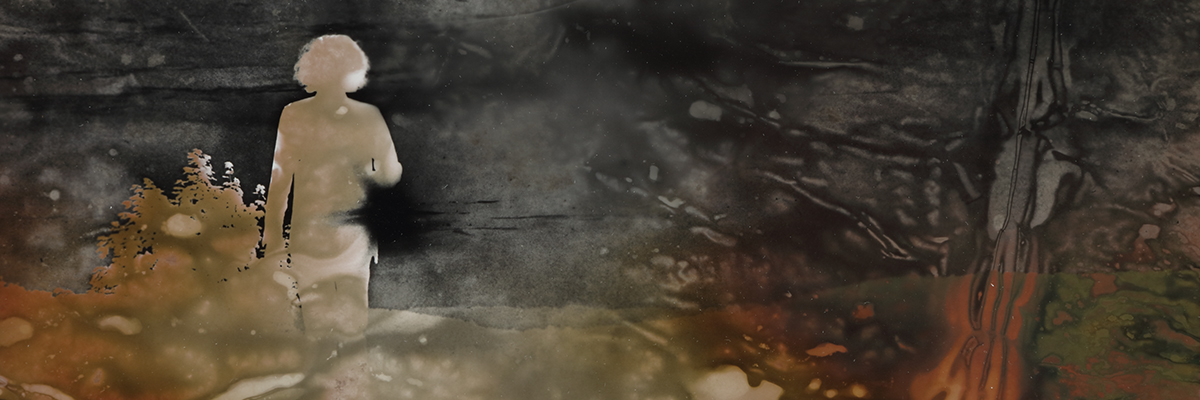
Lucinda Bunnen (American, 1930–2022), Heat Processed: Man in Landscape (detail), 1973, gelatin silver print, 5 1/4 × 9 inches, gift of Robert Bunnen for the Bunnen Collection, 2002.5. © Lucinda Bunnen.
Starting in the late 1960s, traditional black-and-white prints no longer held pride of place as the canonical form of art photography. Women often led the way in making nontraditional work, including color photography, and in producing new, experimental kinds of photography. Some of these experiments involved reviving older, so-called alternative processes, such as cyanotype or photograms, whereas others brought traditional photographic practices into dialogue with new imaging technologies or merged photography with installation, sculpture, film, and other media. Many of these women did not come from traditional photography backgrounds but were instead trained in art schools that increasingly embraced photography as an integral part of their broader curriculum. More broadly, the rise of feminism at this time encouraged many women artists to embrace alternative materials and working methods and to incorporate media that were not traditionally associated with male artists, including performance, video, textiles, and varied mass media.
-
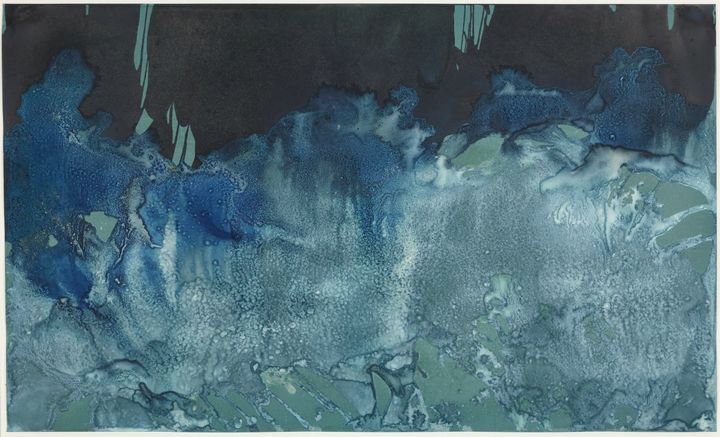
Littoral Drift (a term that describes the movement of sand and sediment along the shoreline by wind) is a series of camera-less photographic prints that Meghann Riepenhoff creates by exposing light-sensitive photographic paper to bodies of water. She made this print by submerging hand-prepared sheets of cyanotype paper into ocean waves off the Pacific coast. The resulting prints depict the movement of water on the paper. Riepenhoff acts as a collaborator with nature in creating these and describes her style as “chaos with a dash of control.” Over time, the photographs will deteriorate due to the unstable process of creating the prints, which Riepenhoff sees as a fitting metaphor for the passage of time.
Littoral Drift Nearshore #649 (Bainbridge Island, WA 02.21.18, Scattered Storms and Fog)
Meghann Riepenhoff, American, born 1979
2018
Cyanotype
42 × 70 inches
Purchase with funds from the H. B. and Doris Massey Charitable Trust
2019.111 -
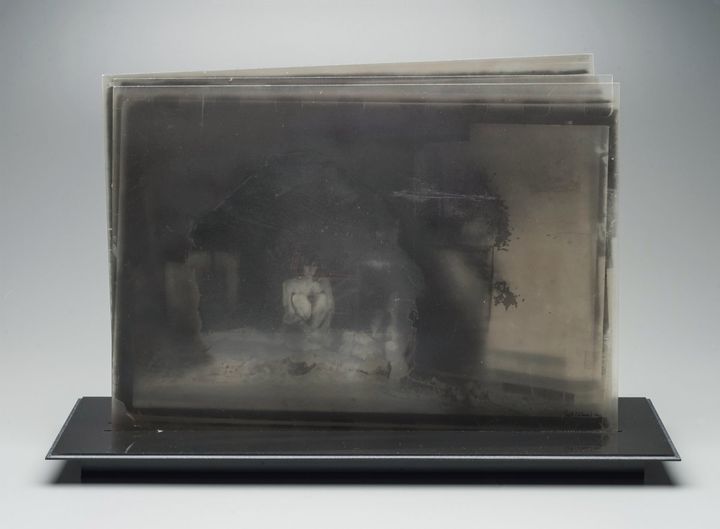
A successful filmmaker whose work has covered such topics as female wrestlers and access to abortion, Ruth Leitman got her start as a student of photography and film at Philadelphia’s University of the Arts. After graduation, she moved to Atlanta, where she made documentary photographs for a variety of publications. She also produced experimental works such as this assemblage of photographs on plexiglass showing her brand new studio the day after it was destroyed by fire. The layered aspect of this piece anticipates Leitman’s interest in the moving image.
Untitled
Ruth Leitman, American, born 1961
1990
Gelatin silver medium on Plexiglas
24 × 18 × 8 3/4 inches
Purchase with funds from Lucinda W. Bunnen for the Bunnen Collection
1991.15 -
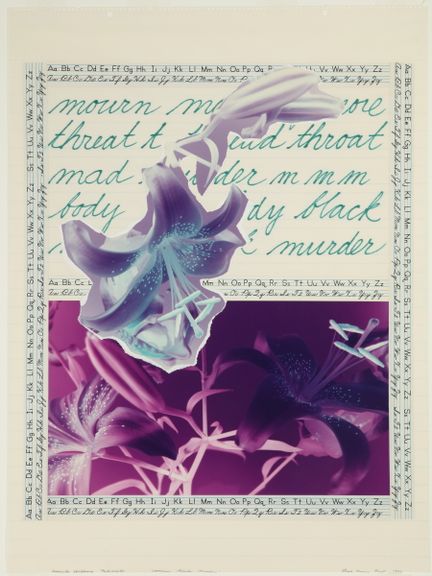
Leah Jaynes Karp created this mixed-media series in response to the Atlanta Child Murders. Between 1979 and 1981, at least twenty-nine Black children, teens, and young adults—mostly boys—were kidnapped and murdered; a suspect was identified and apprehended in 1981. In Karp’s hauntingly delicate works, she pulls phrases and words from news articles covering the events and interweaves them with cutout photographs of lilies. The overall effect of the work is a poignant commemoration of the tragedy of many young lives senselessly lost.
“Mourn Black Murder”
Leah Jaynes Karp, American, born 1940
1982
Dye coupler print on paper with ink
32 × 23 3/4 inches
Gift of Lucinda W. Bunnen for the Bunnen Collection
1983.62.2 -
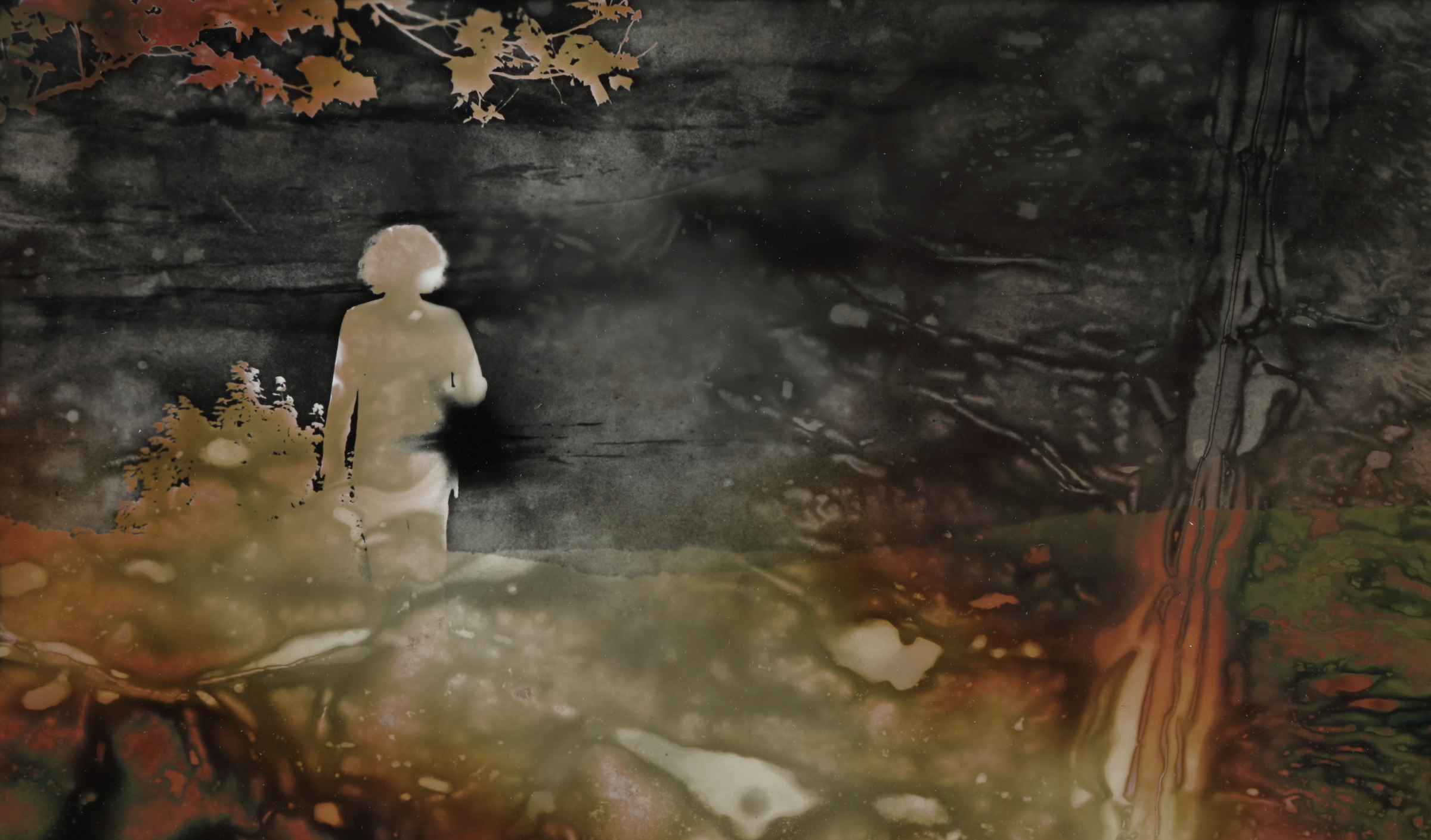
Lucinda Bunnen blazed her own path as an artist, collector, and promoter of photography. Taking up the medium at age forty, she swiftly devoted herself to learning everything about it, from its technical side to its history and contemporary iterations. This mesmerizing early work, which Bunnen made by heating the photographic paper during development, reveals her inquisitiveness and her willingness to break with convention. Bunnen’s contributions to photography in Atlanta are deep. She built up an extraordinary collection of modern and contemporary works, which she gave to the High, and she was a consistent champion of women artists.
Heat Processed: Man in Landscape
Lucinda Bunnen, American, 1930–2022
1973
Gelatin silver print
5 1/4 × 9 inches
Gift of Robert Bunnen for the Bunnen Collection
2002.5 -
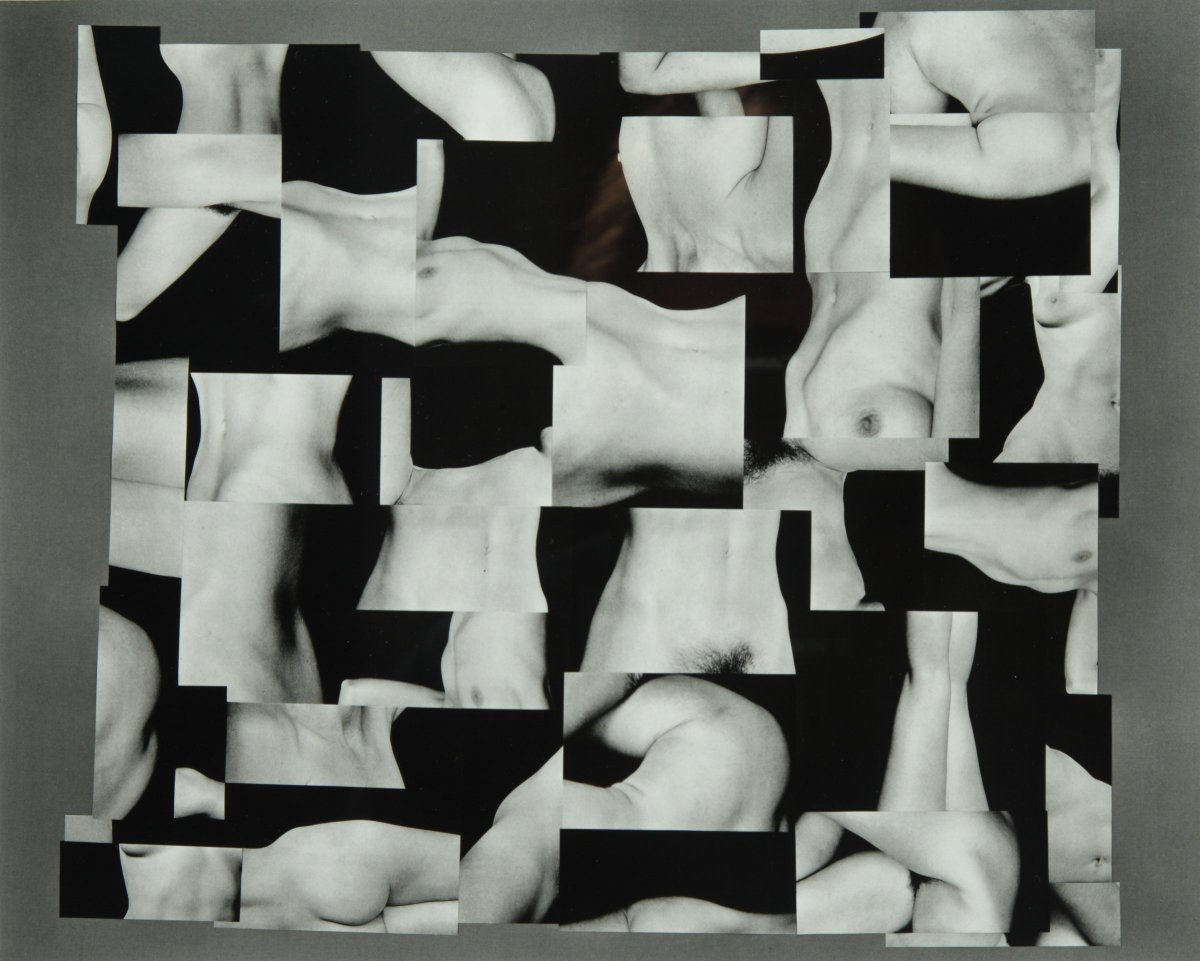
Paula Chamlee’s work stretches beyond the realm of straight photography and into assemblage, painting, and drawing. This collage was inspired by photocopies of prints that her husband, the late photographer Michael A. Smith, intended to share with a prospective collector. Because the photographs’ dimensions did not match with that of the copy machine, the images required cropping and taping. Intrigued by the nature of these cast-off bits piled together and the relationship of the parts to the whole, Chamlee created this collage by piecing together images of her body that Smith had taken.
Nude Collage #1
Paula Chamlee, American, born 1944
1998
Gelatin silver print
7 3/4 × 9 1/2 inches
Gift of Lucinda W. Bunnen for the Bunnen Collection
2012.603 -
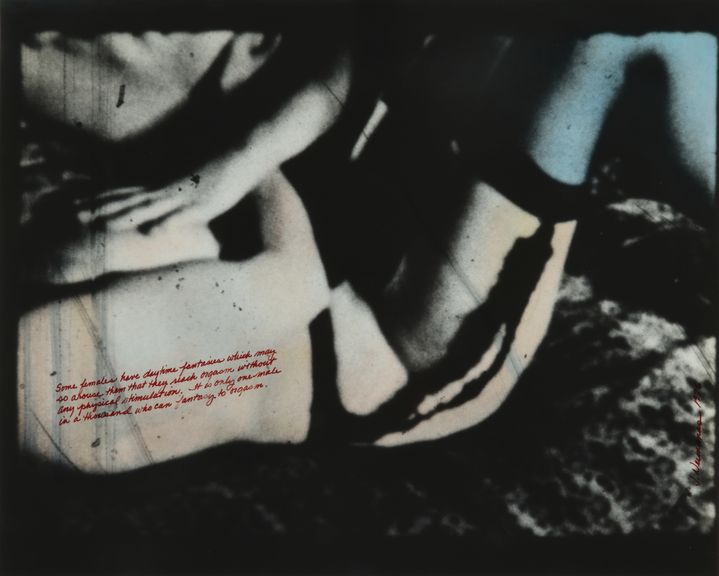
For most of her career, Joyce Neimanas has created photographic images without directly using a camera, choosing instead to make complex collages and photograms of found imagery derived primarily from mass culture. In this work, Neimanas enlarged and printed a still from a 16 mm pornographic film to which she applied color and annotated with text drawn from the controversial Kinsey Report on Sexual Behavior in the Human Female (1953). Made at a time of expanded conversation around gender, feminism, and sexual liberation, this work explores and challenges conventional representations of women’s sexuality.
Daytime Fantasies
Joyce Neimanas, American, born 1944
1976
Gelatin silver print with applied color
Image: 14 × 19 1/2 inches; paper: 16 × 20 inches
Gift of Lucinda W. Bunnen for the Bunnen Collection
1992.357.6 -
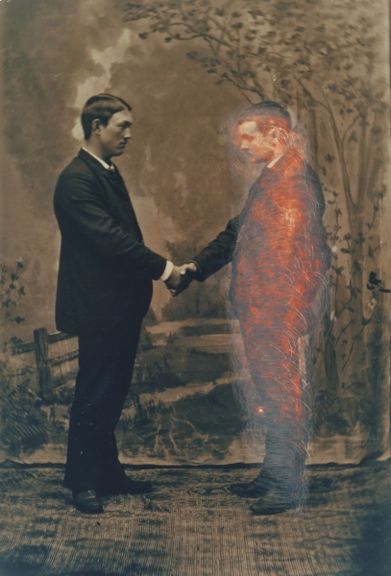
Since the 1980s, conceptual artist Annette Lemieux has appropriated, altered, and recombined found images and objects to create new and unexpected meanings. In this work, Lemieux altered and rephotographed a nineteenth-century tintype that appears to show a man shaking his own hand. Made with a special camera and using double exposure, trick photographs like these were very popular from the 1860s onward, with one advertising slogan proclaiming, “Every Man His Own Twin!” Lemieux’s alterations to the image inject a spookier note, making it seem like the man is confronting his own ghost.
Apparition (Meeting One’s Maker)
Annette Lemieux, American, born 1957
1989
Dye coupler print
18 1/8 × 12 1/4 inches
Gift of Lucinda W. Bunnen for the Bunnen Collection
1995.98.4 -
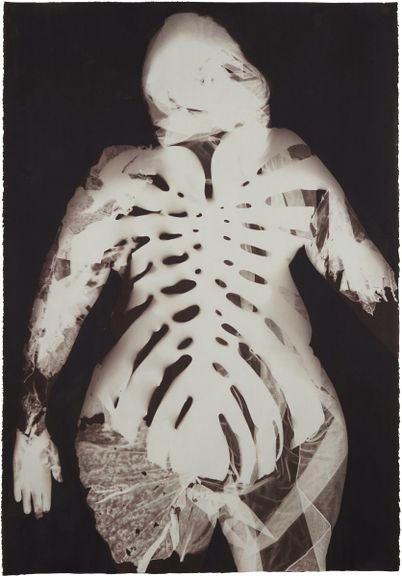
V. Elizabeth Turk is an Atlanta-based photographer whose work explores the connections between the human body and the natural world. To make this print, Turk used an analogue process from the 1800s that involves coating a large sheet of paper with light-sensitive chemicals. She then arranged her model on top of the sheet and exposed it to light, creating a ghostly silhouette, before repeating the exposure with plants. The resulting photogram is a unique, brown-toned image in which botanical forms chaotically intersect with the body, alluding to bones, veins, and skin and suggesting a visceral bond between humans and the environment.
Calaeno
V. Elizabeth Turk, American, born 1945
2018
Van Dyke print
47 × 34 inches
Purchase with funds from Lucinda W. Bunnen for the Bunnen Collection
2019.182 -
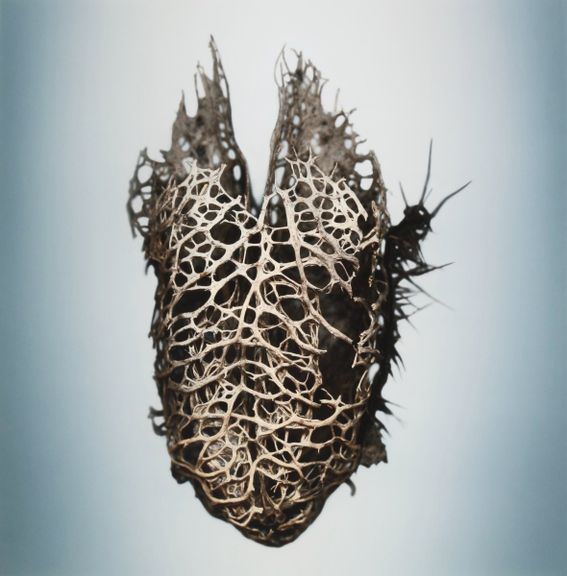
The prints in Svjetlana Tepavcevic’s Means of Reproduction series are camera-less photographs created by placing seed pods on a flatbed scanner. Fascinated by the infinitely varied and intricate structures that the most basic forms of life take, Tepavcevic enlarges the scans so that the pods are all the same size and scale and seem to float in front of a hazy field of color. Drawing on new imaging technologies, Tepavcevic says she aims “to bring the concept of portraiture to the still-life genre.”
Means of Reproduction no. 615
Svjetlana Tepavcevic, American, born Bosnia, 1970
2009–2011, printed 2011
Pigmented inkjet print
Framed/Mounted: 20 15/16 × 20 5/8 inches
Gift of the Atlanta Photography Group
2013.42 -
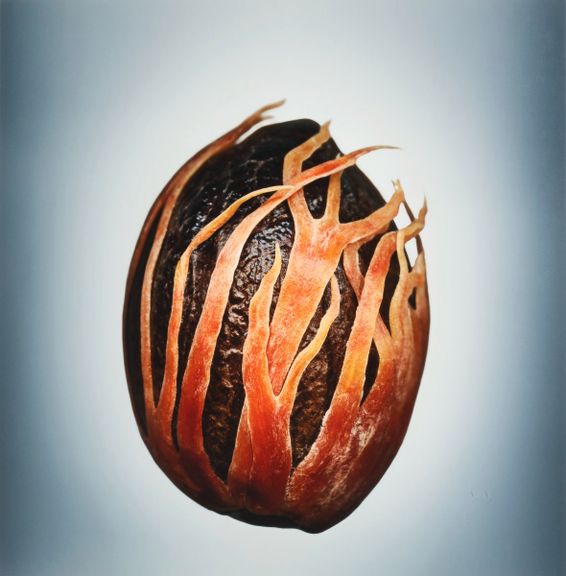
Means of Reproduction no. 807
Svjetlana Tepavcevic, American, born Bosnia, 1970
2009–2012
Pigmented inkjet print
Framed/Mounted: 20 7/8 × 20 5/8 inches
Gift of the Atlanta Photography Group
2013.41 -
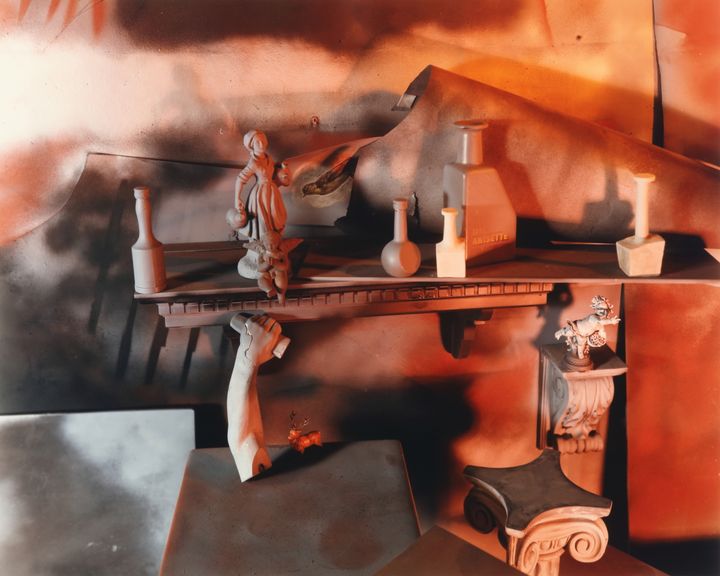
Trained as a painter, Jan Groover came to prominence in the late 1970s when she began making and photographing complex constructions out of kitchen utensils and other everyday items to create evocative and formally elegant pictures. In tabletop works like this one, Groover frequently colored or painted the objects in her compositions, experimented with dramatic, colored lighting, and sketched her compositions in advance to make lush dreamscapes. The goal of photography for Groover was not to represent reality but to transform it. As she put it in 1994, “I had some wild idea that you could change space—and you can.”
Untitled
Jan Groover, American, 1943–2012
1989
Dye coupler print
Gift of Lucinda W. Bunnen for the Bunnen Collection
1995.98.3 -
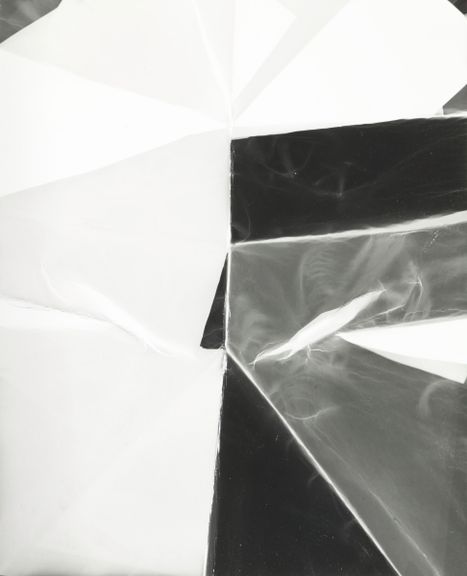
In Christina Price Washington’s series Light in Purse, a piece of photographic paper becomes a visual logbook of her movements and a day’s activities. By placing the light-sensitive paper inside the bag, each instance of her opening her bag is automatically recorded as outside light filters in and strikes the paper, which results in the monochromatic forms once the print is developed in the darkroom. The paper in the bag also naturally becomes bent and folded as the day goes on, adding a weathered texture that complements the abstract forms of the exposed surface.
Light in Purse #4
Christina Price Washington, American, born 1965
2009
Gelatin silver print
10 × 8 inches
Purchase with the Lucinda Weil Bunnen Fund for the Bunnen Collection
2014.387 -
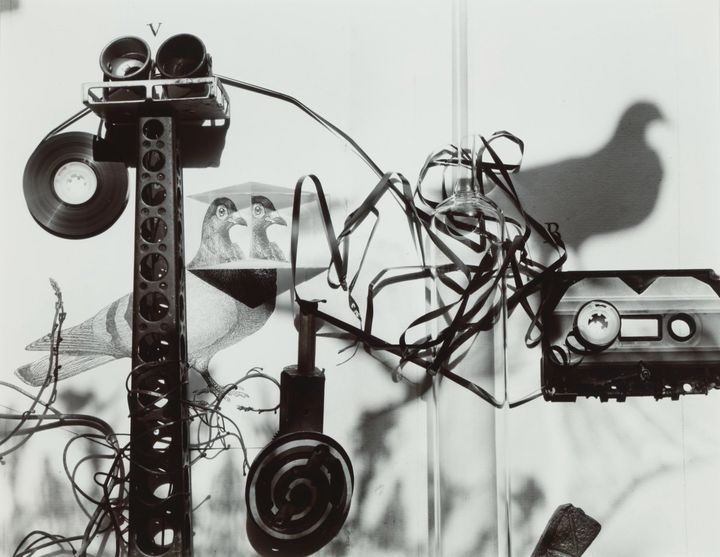
Like other experimental photographers who emerged in the late 1970s and 1980s, Olivia Parker worked primarily in her studio, partly because it enabled her to make art while raising her two children. Here, a rich array of found objects is assembled in an unusual combination and photographed. The pigeon shadow, created from a paper cutout taped to her studio window, infuses this picture with liveliness. Both fanciful and surrealist, Feral Tape poses a philosophical challenge, asking us to construct meaning from the parts and comparing different orders of representation.
Feral Tape
Olivia Parker, American, born 1941
1984
Gelatin silver print
11 × 14 inches
Gift of the artist
2020.352 -

Barbara Kasten is best known for constructing and photographing complex assemblages from a wide variety of materials, including painted wood, plaster, mirrors, screens, and fibers. In 1986, she began photographing postmodern architecture, including the High’s Richard Meier–designed building, pictured here. Using a large-format camera and working with a professional movie lighting crew, Kasten created an elaborate setup of colored lights and mirrors that transformed the building’s gleaming white, cool industrial forms into a vibrant, dynamic, and dizzying intersection of forms and space.
Architectural Site 17
Barbara Kasten, American, born 1936
1988
Dye destruction print
50 × 60 inches
Purchase
1988.211 -
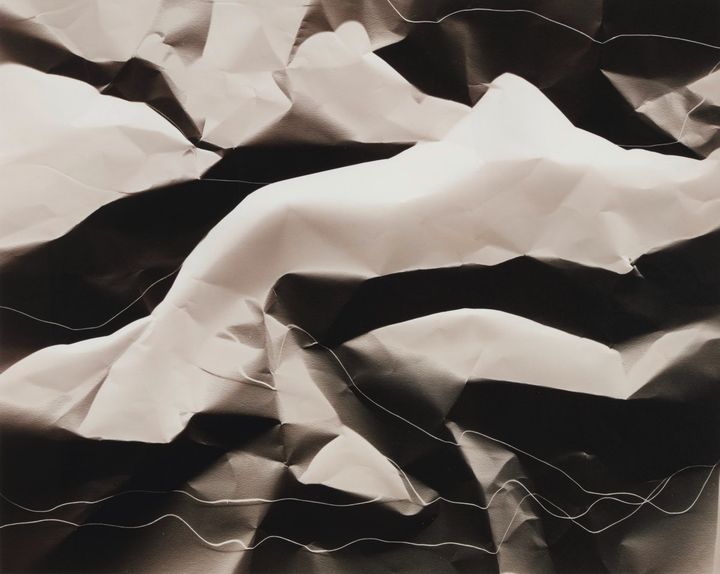
Sheila Pinkel is a multidisciplinary artist who endeavors to make visible aspects of the unseen world, primarily through experiments with light and different types of camera-less photography. This unique photogram began with a sheet of photographic paper that Pinkel folded, shaped, and then exposed to light. Once unfolded and developed, the paper was left with a dramatic patterning of light and shadow that appears to take a sculptural form.
Lightwork, from Silver See, Los Angeles Center for Photographic Studies portfolio, 1977
Sheila Pinkel, American, born 1941
1976
Gelatin silver print
16 × 20 inches
Gift of Ben Bivins
2000.262.15